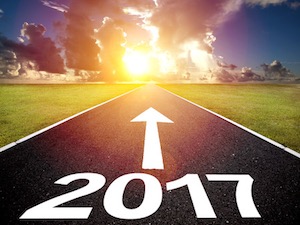 In the first quarter of 2017 we will see the Senate Judiciary Committee hold hearings and vote on Trump’s nominee to be US Attorney General. That’s US Senator Jeff Sessions (R-AL), a member of the Judiciary Committee. He’s been active on patent reform issues such as ending carve outs for special interests seeking to invalidate or reinstitute patents through company and patent specific legislation. And Sessions has voted on judges nominated to the bench including the US Court of Appeals for the Federal Circuit.
In the first quarter of 2017 we will see the Senate Judiciary Committee hold hearings and vote on Trump’s nominee to be US Attorney General. That’s US Senator Jeff Sessions (R-AL), a member of the Judiciary Committee. He’s been active on patent reform issues such as ending carve outs for special interests seeking to invalidate or reinstitute patents through company and patent specific legislation. And Sessions has voted on judges nominated to the bench including the US Court of Appeals for the Federal Circuit.
If all current Federal Circuit judges eligible elected their senior status, then Trump would be able to nominate six judges right now. He would have to wait until his second term to nominate a seventh. While it seems unlikely that all would elect senior status en mass, the potential for Trump to place his mark on the Federal Circuit is real.
There are over 100 open seats on the federal bench, double the number Bush’43 left Obama eight years ago. Since Federal Circuit judges do not require support from home state Senators like other judicial nominees, a patent savvy AG may be able to have a greater impact. Usually the bipartisan nature of patent issues saves this sole patent appeals court from the painful delays and workload issues other courts endure due to Congressional gridlock and to an executive slow to nominate.
On the other hand, the unusual conduct of the Federal Circuit, which has been called out by Chief Justice Roberts and many others, may exacerbate the vacancies in district courts. One recent example of this unusual behavior is the use of Rule 36 to affirm district court decisions in 101 cases post-Alice without publishing an opinion. District courts rely on precedent. The failure of the Federal Circuit to explain their decisions increases the burden on trial judges. Chief Justice Roberts, in his 2016 year-end report, highlighted this exact point and pointed out how much harder they work in contrast to appellate judges.
In the first half of 2017 we should also see the Senate Judiciary Committee hold hearings and a vote on Trump’s nominee to fill the vacancy at the US Supreme Court. While Congress seem to pass some form of patent legislation roughly every 9 to 11 years, the more important changes with regard to business predictability and economic growth tend to come from specific Court decisions. Just look at what Alice has done to ruin software patents with uncertainty, and now with the PTAB actually finding that an MRI machine is an unpatentable abstract idea. Worse it has placed the US behind Europe and even China in terms of protecting computer implemented inventions.
And at some point we should see action on filling the many vacancies in our district courts including those in the Eastern District of Texas, which is known as a patent-owner friendly patent court and is the epicenter of the patent venue debate that will unfold at the Supreme Court in 2017 and on Capitol Hill at some point during the 115th Congress. There are three vacancies as well as three judicial emergencies in EDTX. There are 41 judicial emergencies nationally. Thought leaders in the patent community have commented that this situation invites litigants to game the system by choosing their judges.
In 2017 we may see layoffs at the USPTO’s patent invalidation court, the Patent Trial and Appeals Board (PTAB). The USPTO has been diverting fees collected from patent applicants and maintenance fee payers to subsidize the rapid growth of the PTAB the past five years. Adding insult to injury the USPTO unilaterally decided to induce infringers to exploit the PTAB more aggressively by refunding their petition fees should the USPTO not institute a proceeding. When the AIA was being debated it was agreed that PTAB would be self-sufficient based on the fees it collected.
The Office of Management and Budget is reviewing the USPTO’s proposed rules for increasing fees. A variety of patent office customers including NASA have filed public comments saying the fee hike is too much. Since the dawn of the space race Congress has debated creating post grant reviews as a cheaper, faster alternative to court litigation. In 2008 both candidates McCain and Obama embraced creating more post-grant review. The America Invents Act in 2011 gave the USPTO a one time 15% fee surcharge so that it could have the funds necessary to stand up new responsibilities like PTAB. Unfortunately, Congress and President Obama colluded to divert USPTO fees to the general treasury and patent owners gamed the system by filing applications before the 15% hike went into effect, reducing the expected financial surge. So today the USPTO is left to ask customers to pay again and at a higher price for a service that aims at fixing the poor quality patents that the USPTO has already been paid to issue correctly the first time but apparently did not.
Hopefully it won’t take a rocket scientist to figure out that the PTAB is a controversial venue choice. USPTO Director Lee has been making progress on improving patent quality but her reforms will take time, and haven’t really taken into consideration the fact that examiners play a role in the low patent quality equation. PTAB has become a very expensive proceeding and federal judges are not always keen to stay court litigation. This skepticism may broaden if judges continue to make the progress on case management that Roberts celebrates and supports. The Washington Post, among others, have highlighted the USPTO’s financial scandals in recent years. On the same day as the year-end report by Roberts the Post detailed the USPTO forcing a surge in hiring before Trump’s swearing in on January 20th. There had been an agreement after the election in November that the Obama administration would freeze hiring. If the USPTO is so cash strapped that it has to take from patent owners paying maintenance fees to subsidize infringers to run to the PTAB, then why are they racing to hire more staff and at risk of a massive unforced error?
Enforceable rights and efficient process can help make patent courts great again for both patent owners and defendants by providing certainty and predictability. Interestingly, providing certainty and predictability would make much litigation unnecessary, which in and of itself would be a form of litigation reform.
Courts can make patents great again in America. And if not they will at least be as active as they have been in the past 10 years in terms of shaping the patent dialogue.

![[IPWatchdog Logo]](https://ipwatchdog.com/wp-content/themes/IPWatchdog%20-%202023/assets/images/temp/logo-small@2x.png)


![[Advertisement]](https://ipwatchdog.com/wp-content/uploads/2024/04/Patent-Litigation-Masters-2024-sidebar-700x500-1.jpg)

![[Advertisement]](https://ipwatchdog.com/wp-content/uploads/2021/12/WEBINAR-336-x-280-px.png)
![[Advertisement]](https://ipwatchdog.com/wp-content/uploads/2021/12/2021-Patent-Practice-on-Demand-recorded-Feb-2021-336-x-280.jpg)
![[Advertisement]](https://ipwatchdog.com/wp-content/uploads/2021/12/Ad-4-The-Invent-Patent-System™.png)






Join the Discussion
3 comments so far.
Thomas Woolston
January 10, 2017 02:56 amTrump will be good for the US patent system. IMHO strong solid judges at every level will appreciate the separation of powers and 7th amendment issues inherent in the anomaly of the IPR construct. Better judges make better law.
angry dude
January 10, 2017 01:07 amJohn Appleton @1
Google CTO ???? :):):):)
She’s a career lawyer with some tech education
from wikipedia:
“Lee simultaneously obtained a B.S. in electrical engineering and an M.S. in electrical engineering and computer science from the Massachusetts Institute of Technology (MIT) in 1989;[1][2][3] her master’s thesis was on qualitative behavior and nonlinear circuits.[4] She obtained her J.D. from Stanford University School of Law in 1992.[1][2][3]”
Note: she didn’t spend much time if any time at all in academia or corporate R&D – went straight to greener pasture of corporate lawyers (and in her latest reincarnation as PTO director she absolutely devastated careers of many good patent prosecution and litigation attorneys and agents – not to mention pesky independent inventors – who cares about those losers?)
Shame
She must go ASAP
John Appleton
January 8, 2017 01:54 pmRead the article and I still don’t know if a Trump administration is good for patent owners or infringers. Obama appointed Lee. Ex-Google CTO. She is for the IP Thieves. Hope Trump drains the swamp with her at the head of the line.
Signed,
Patent Owner and Inventor who has seen IP literally stolen (ask Vringo).